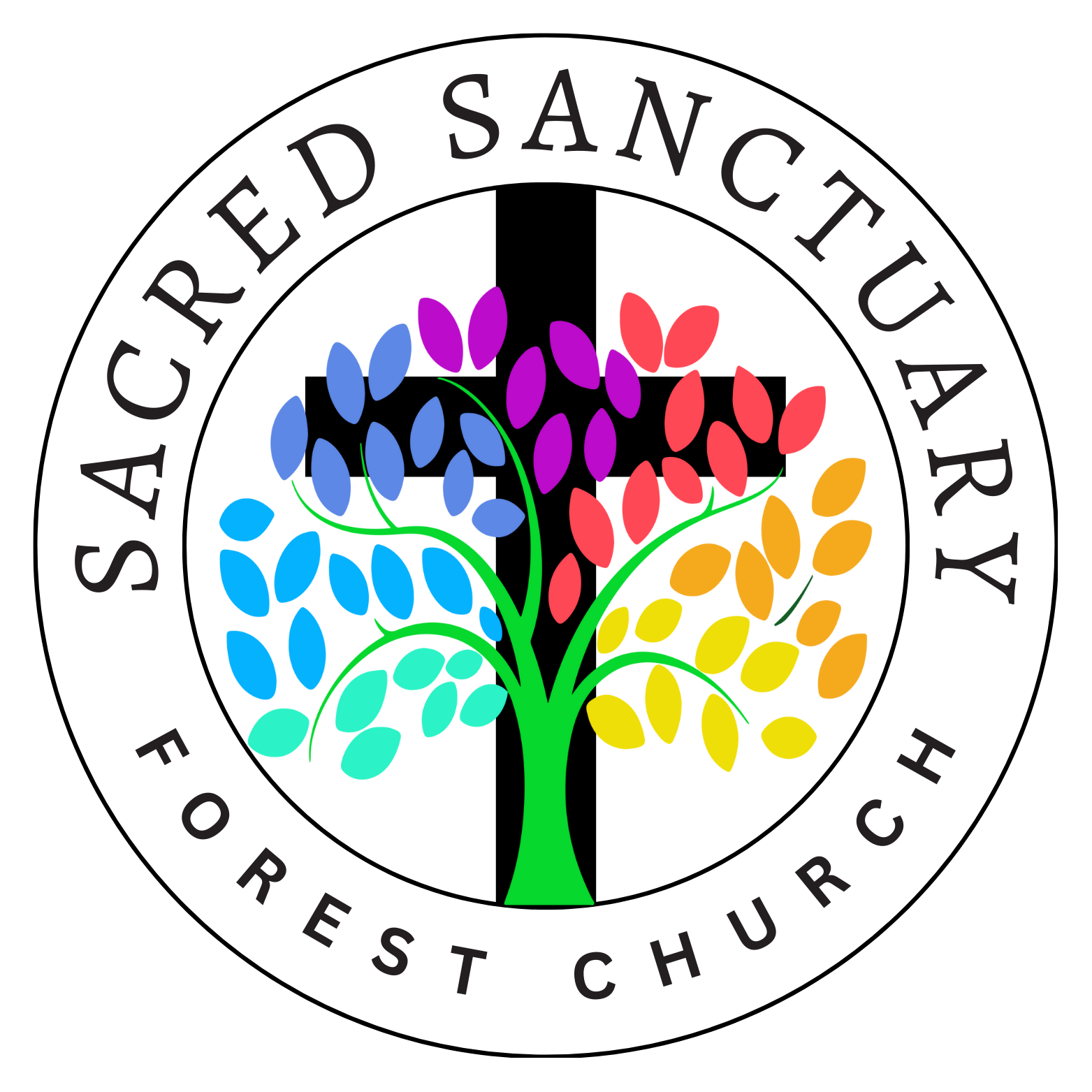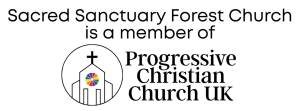Celtic Christianity is a rich and ancient stream of the Christian tradition, deeply rooted in the early church of the British Isles, particularly in Ireland, Scotland, Wales, Cornwall and Northern England. It flourished from around the 4th to the 12th centuries and continues to inspire many today who seek a faith that is earth-honouring, soul-deep, and Christ-centred.
It emerged at a meeting point of early Christian teaching and indigenous Celtic nature based paths combining a love for Christ with a deep reverence for the natural world, a sense of the sacred in everyday life, and a spirituality marked by hospitality, community, and wonder.
At its heart, it deeply reveres Jesus Christ as the incarnate God, saviour, and model for living. What makes it distinctive is how it expresses that devotion. Through creation, daily rhythms, music and community, often emphasizing the immanence of Christ in all things, not just in church settings or doctrine. So while it may feel more earthy or mystical than other traditions, it’s still grounded in a strong Christ-focused faith.
What makes Celtic Christianity unique is its profound reverence for nature, its emphasis on the immanence of God, and its sense of the sacred in all things. It is a spirituality that recognises the Divine not only in scripture and sacrament, but in sun and stone, in river and wind, in the turning of the seasons and the rhythm of daily life. God is everywhere, God is the Divine, God is the Universe. God is never far away and always ready to be seen, felt, heard, loved, just as we are to God.
Unlike some expressions of Christianity that can feel distant or abstract, Celtic Christianity is deeply rooted in the fact that God is not distant or unreachable, but in fact near and present in the here and now. Every bush may burn with holy fire, every creature may speak of God’s glory. The world is a living cathedral, and all creation is a reflection of the God. Today, Celtic Christianity offers a faith that is earth-based, contemplative, mystical, and deeply rooted in the seasons and the soul of the land.
Celtic Christianity often feels more circular than linear, more intuitive than dogmatic. It values mystery, beauty, and the inner journey, holding space for questions and deep listening. For many today, it offers a path that is both deeply Christian and deeply ecological, a way of following Christ that is attuned to the earth, shaped by the land, and open to the wonder and wisdom found in both scripture and sky.
When we explore the early Celtic Christian tradition, one of the most striking features is how different it was from the more rigid, centralised structure of the later Roman Church. The Celtic model of Church life was far more organic, relational, and grounded in community. It offers us a vision of Christianity that feels refreshingly alive and deeply connected—to people, place, and Spirit.
Rather than leadership being about status or power, in the Celtic Church it was about service, humility, and holiness. Those who led were people recognised for the depth of their prayer, the simplicity of their lives, and their nearness to God. Authority was not imposed from above, but naturally emerged from within the community itself.
A remarkable aspect of this early tradition is the space it gave for women to lead. Figures like St Brigid of Kildare held significant spiritual authority, St Brigid herself led a double monastery (housing both men and women) and was respected by bishops and kings alike. In a time when women’s leadership was often overlooked or erased, the Celtic Church allowed them to flourish as abbesses, prophets, and spiritual guides.
Spiritual authority came not through office or title, but through experience and a life lived in tune with God and creation. People turned to their anam cara—meaning “soul friend” in Gaelic—for guidance, someone who walked alongside them with wisdom and compassion. These soul friends weren’t necessarily official clergy; they were trusted companions, mentors, and spiritual elders who helped others discern God’s presence in everyday life.
Unlike the centralised, bishop-led model of Roman Christianity, Celtic Christianity developed in close connection with the land and its people. It existed within the framework of tribal and clan-based societies. Saints were often part of local families and communities, and their spiritual authority had a social as well as a sacred dimension. New monastic communities were frequently established by disciples or relatives of earlier saints, creating a kind of spiritual kinship network that stretched across the land.
This way of doing Church was naturally decentralised and deeply relational. There wasn’t a pope-like figure overseeing everything. Instead, communities were given space to shape their own rhythms and relationships, guided by the wisdom of their local elders and the inspiration of their saints. Authority rested in the character and spiritual maturity of the individual, and in the respect they had earned through their life and witness.
In many ways, this ancient model speaks powerfully into the present moment. Today, as people search for more inclusive, grounded, and heart-led expressions of faith, the Celtic tradition offers rich inspiration. In Forest Church communities and similar movements, we see echoes of this older way—where spiritual leadership arises from lived experience, where nature is recognised as a teacher, and where people gather in circles rather than hierarchies.
This is a vision of Church that values people over power, presence over prestige, and relationship over rigid structure. It’s a model that reminds us that the Spirit of God is not confined to cathedrals or titles, but moves freely through wild places, sacred friendships, and everyday moments of holiness.
Perhaps the wisdom of the early Celtic saints can help us imagine a Church that is gentler, wilder, and more deeply attuned to the rhythms of the Earth and the whispers of the Divine.
Key themes of Celtic Christianity include:
Creation as Sacred: The earth is not a resource to be exploited, but a sacred gift to be cherished. Nature is seen as a “second scripture” that reveals the heart of God.
Thin Places: Celtic tradition speaks of “thin places”—holy moments and locations where the veil between heaven and earth feels especially thin. These may be ancient wells, forest clearings, mountaintops, or quiet inner spaces of prayer. A term often heard is that the ‘veil is thin’ meaning the veil between the 2 worlds is so thin you can feel each side.
The Seasons and the Sacred Calendar: Celtic Christians honoured the natural cycles of the year, weaving them into their spiritual practices. Equinoxes and solstices and festivals such as Samhain, through a Christian lens, recognising Christ as present in every season of life and death, growth and rest.
Hospitality and Community: Radical hospitality, warmth, and welcome were central to monastic and village life. Everyone—friend or stranger—was to be treated as Christ in their midst.
The Wild and the Monastic: Early Celtic monks often sought solitude in wild places—on windswept islands, forest hermitages, and misty mountain caves. Yet they also lived in close-knit, prayerful communities where work, worship, and wonder flowed together.
Music, Prayer, and Everyday Spirituality: The Celts expressed their faith in songs, blessings, chants, and prayers woven into daily life such as milking the cow, lighting the hearth, walking to work. Nothing was too ordinary to be infused with sacred intention.
The Saints: Celtic Christianity and the Celtic saints are deeply intertwined, with the lives of the saints shaping and reflecting the spiritual ethos of the Celtic Christian tradition. Understanding how Celtic Christianity works with the saints can offer rich insight into a way of being Christian that is deeply rooted in the rhythms of nature, community, magic and mysticism.
What is an Anamchara?
An Anamchara or Anam Cara means ‘Soul Friend’ in Gaelic. In ecclesiastical terms it means more of ‘Spiritual Director. Both spellings are correct but here is a breakdown of both and why we choose Anamchara…
Anam Cara
This is the more common and modern spelling, especially popularized by John O’Donohue in his book “Anam Cara: A Book of Celtic Wisdom.” It literally means “soul friend” in Irish Gaelic (anam = soul, cara = friend). This is the phrase most people will recognize and connect with today.
Anamchara
This is an older or more fused form of the same phrase, seen in some early Irish texts and ecclesiastical usage. It still means “soul friend,” but more as a spiritual leader and just written in a more ancient or grammatically condensed way. It is the traditional spelling and historically grounded.

